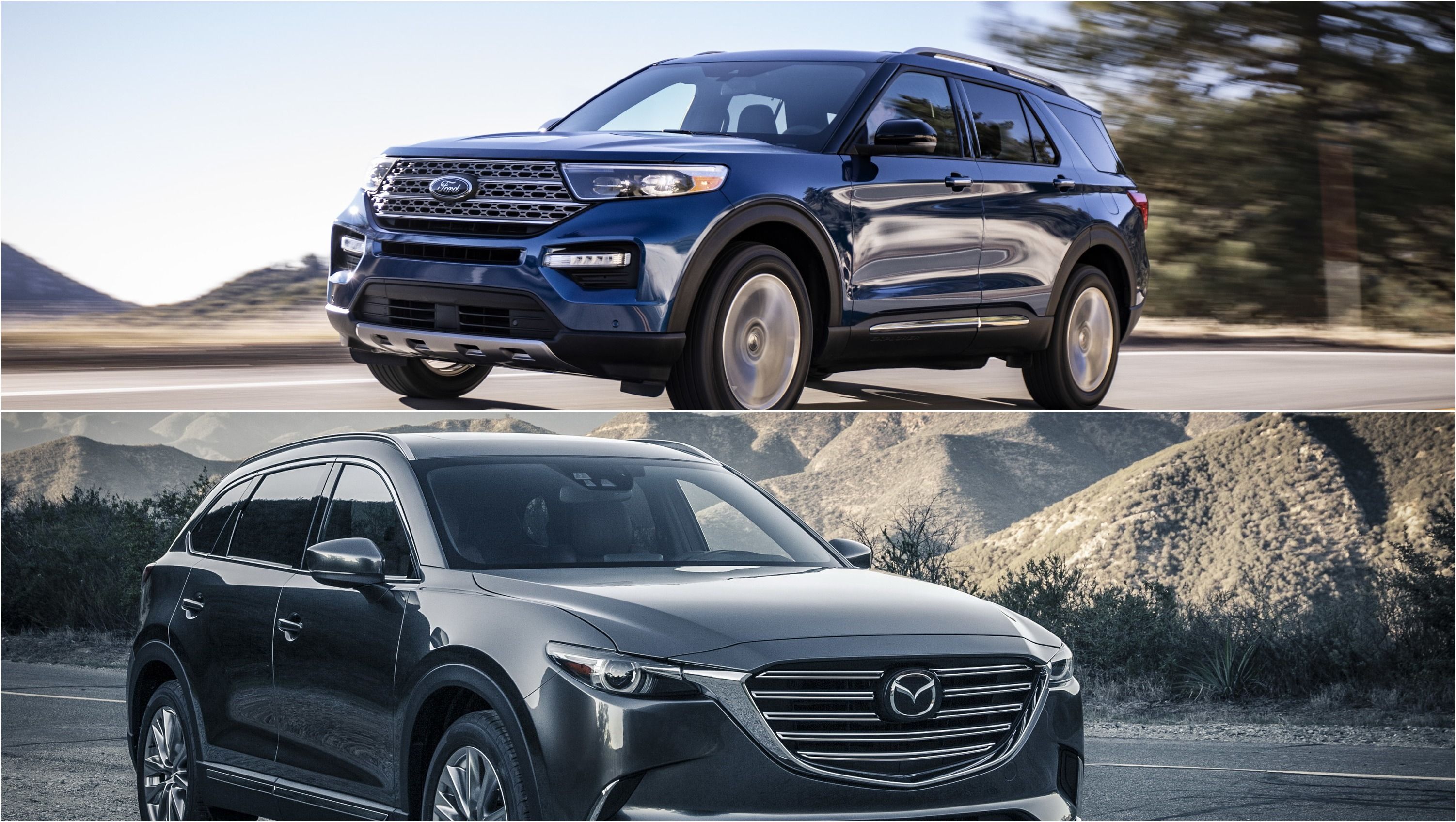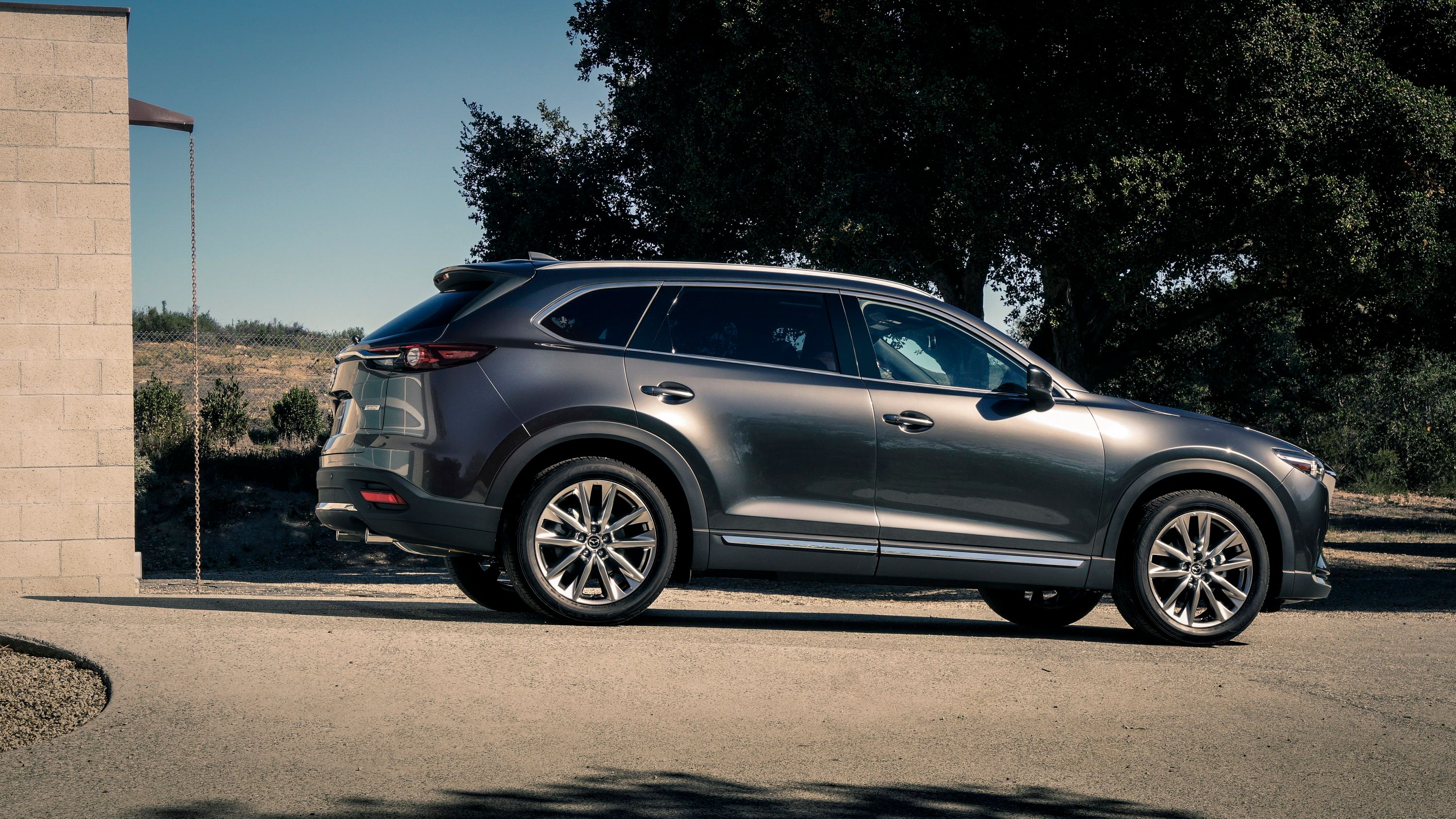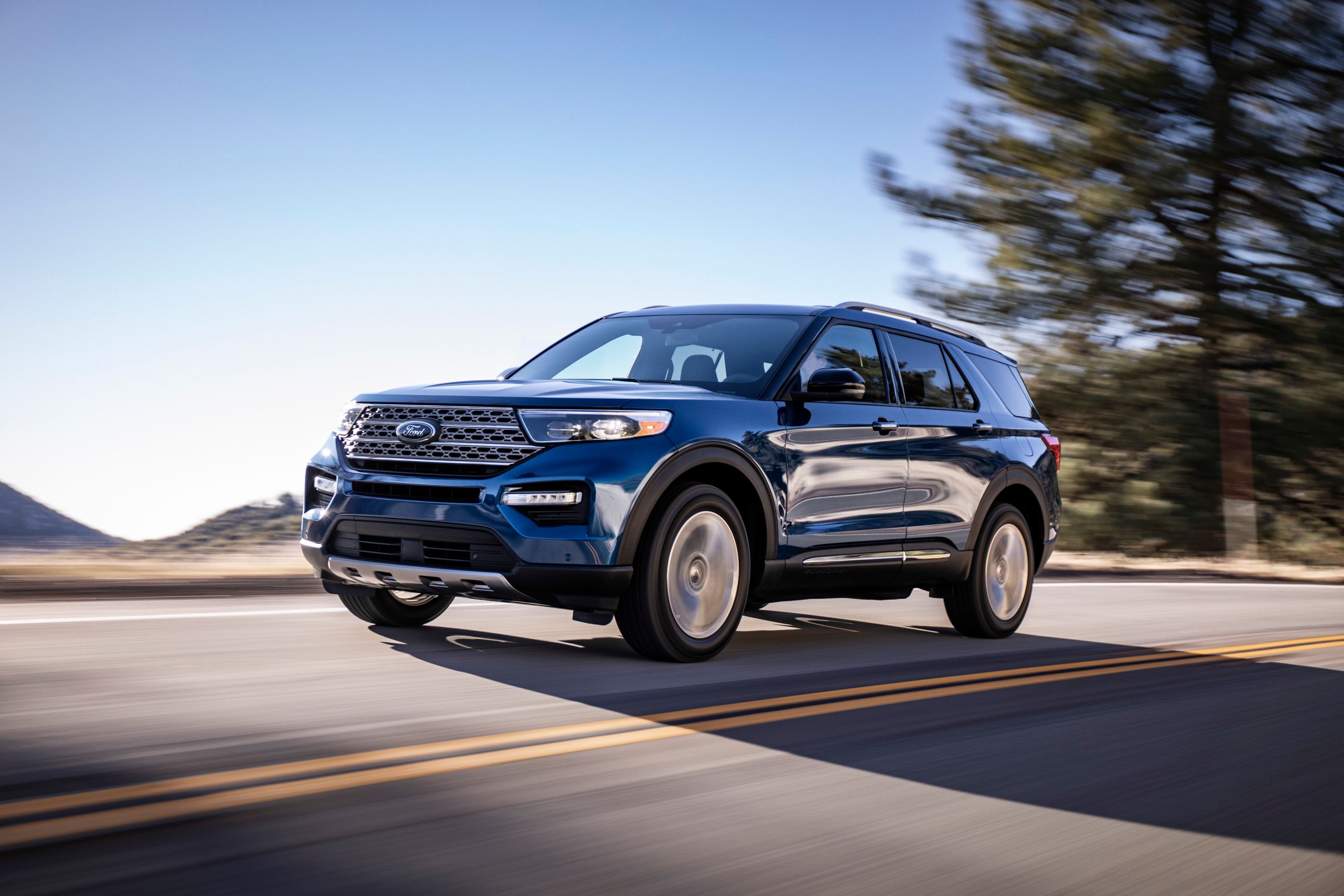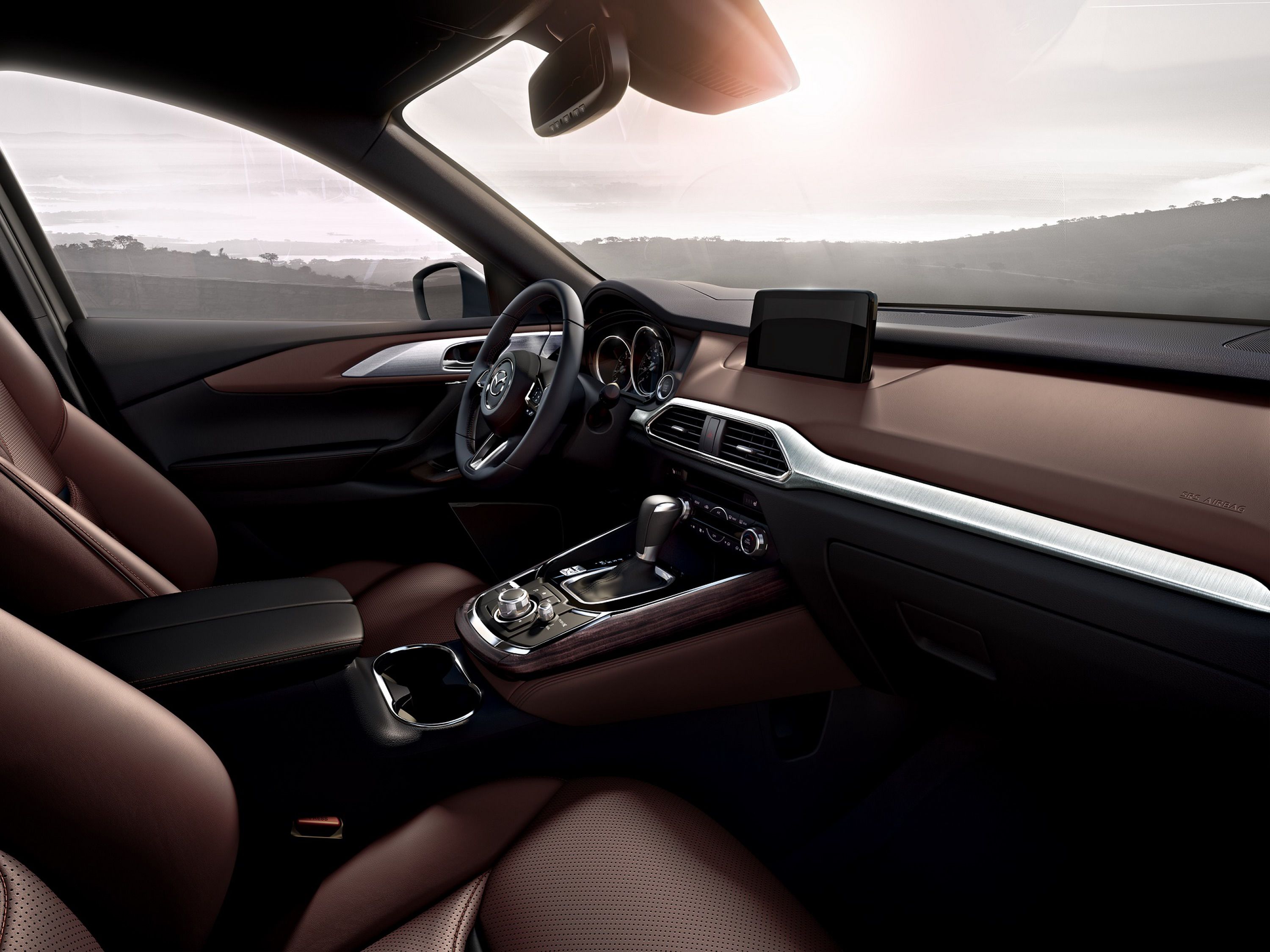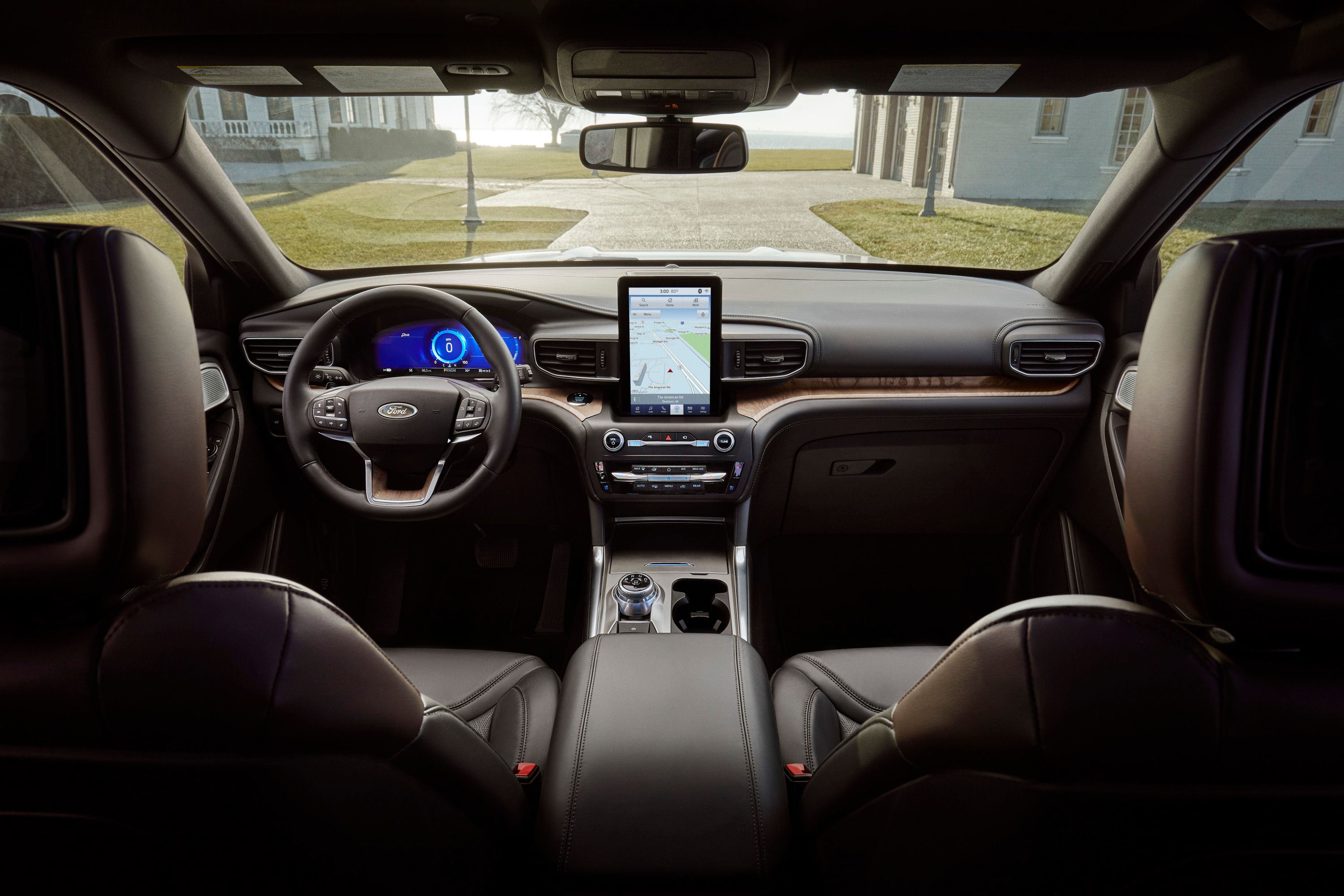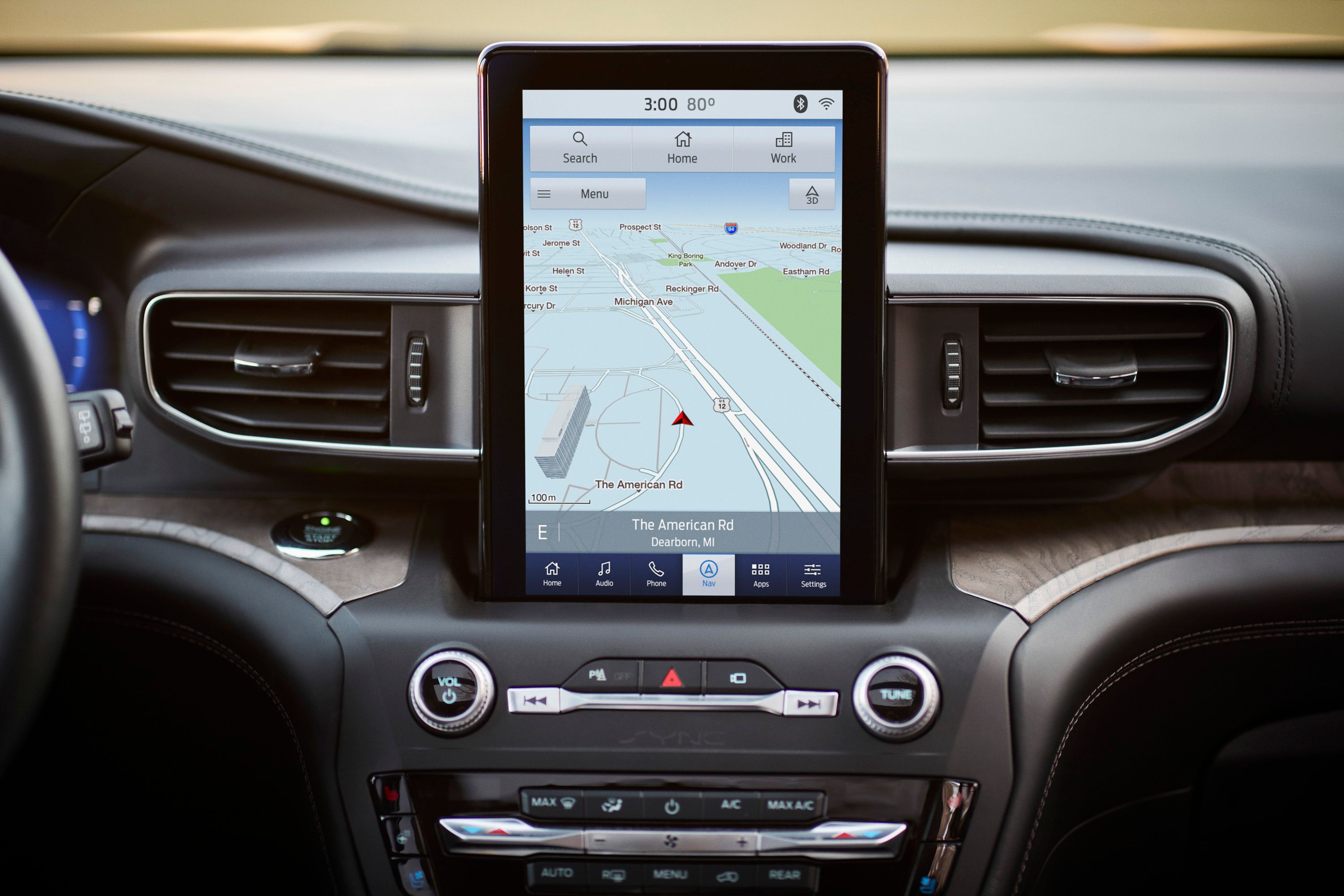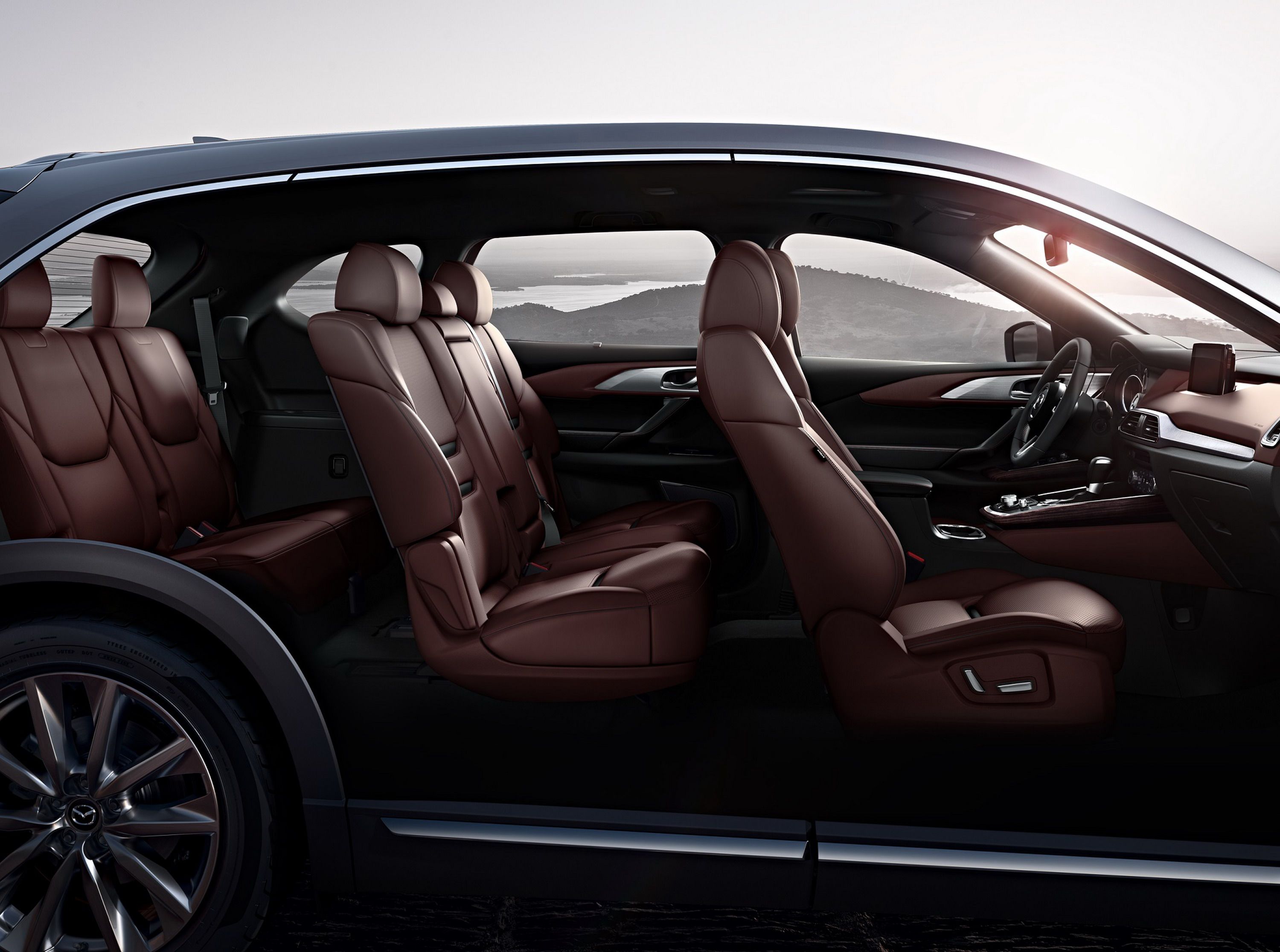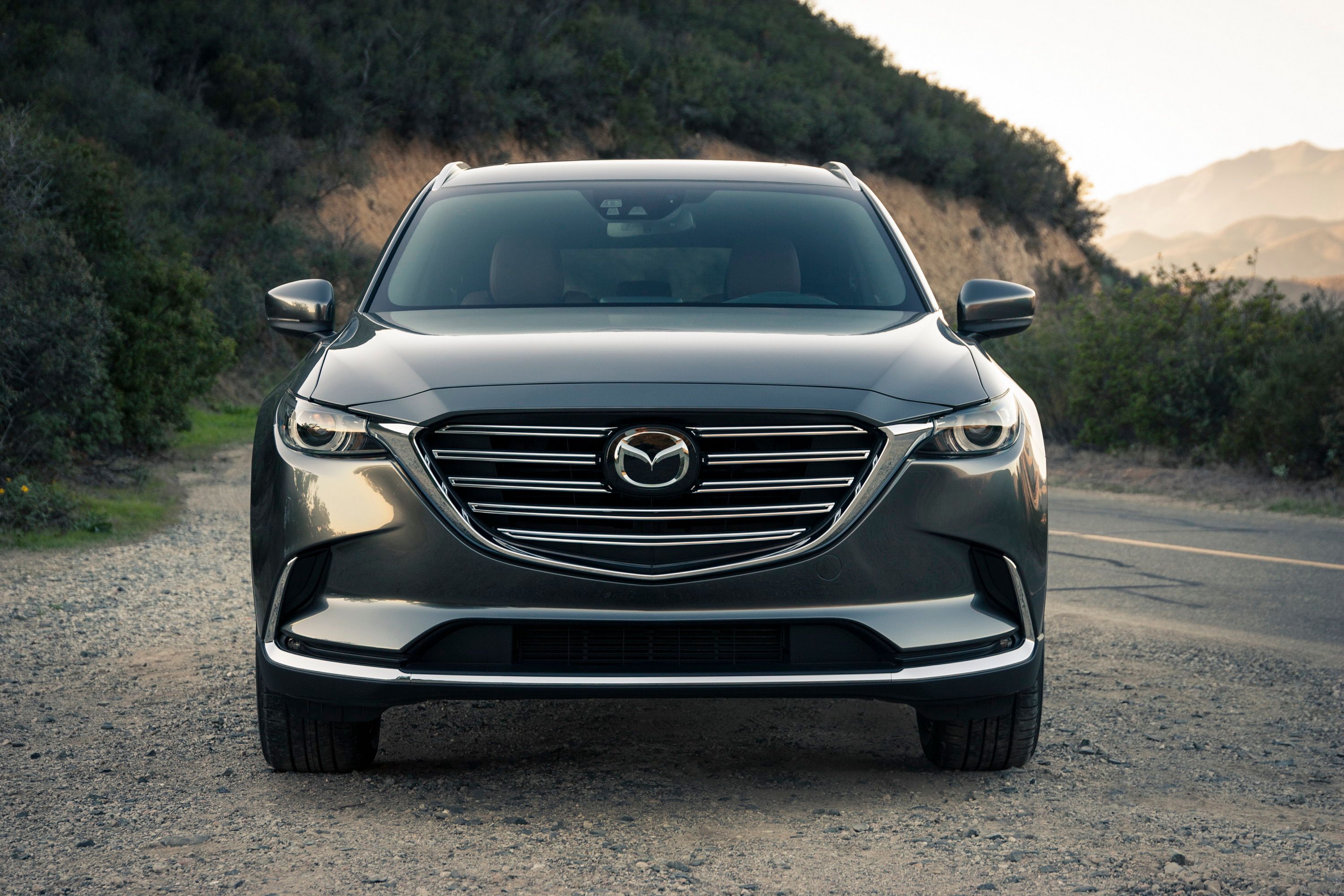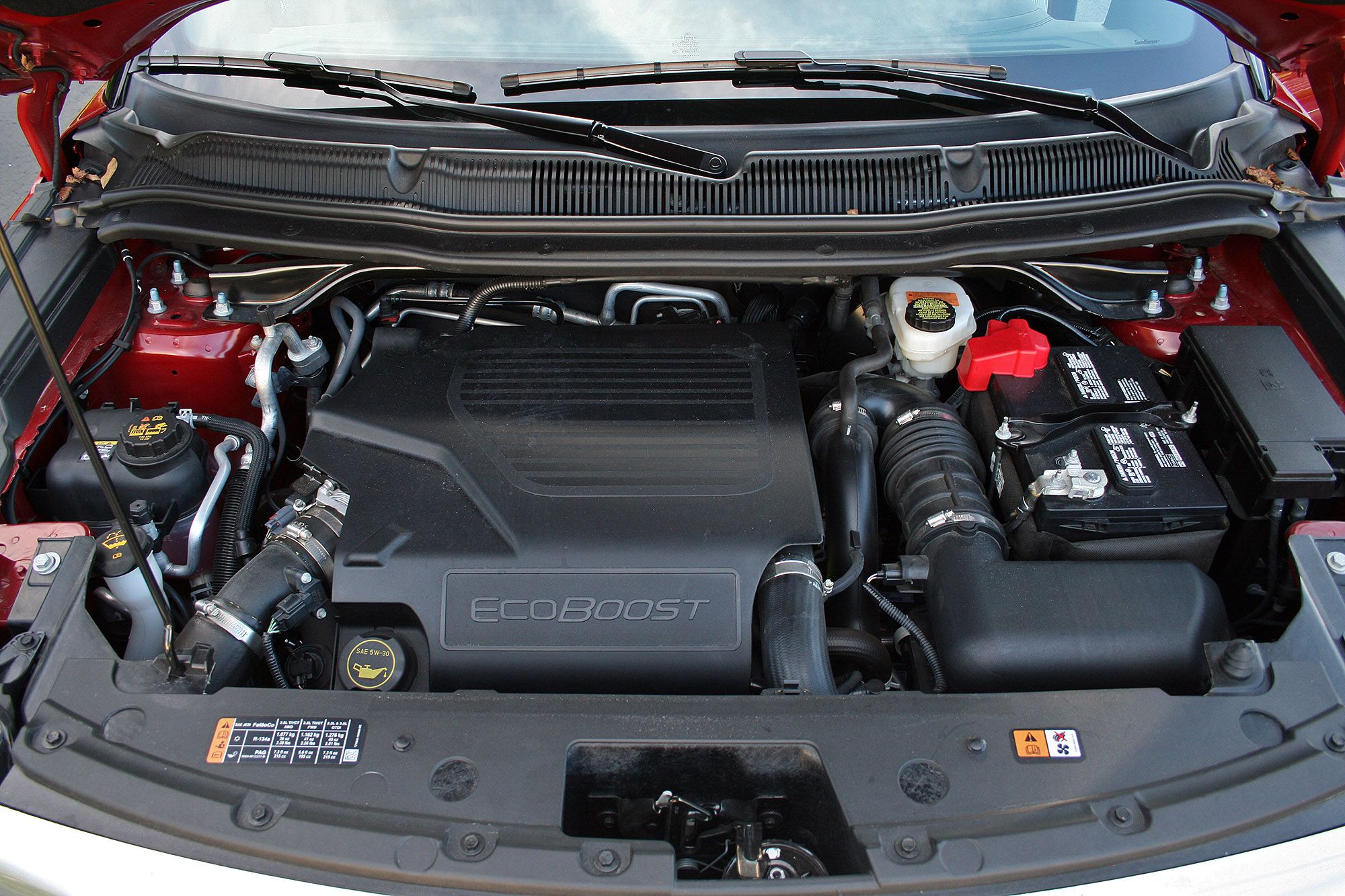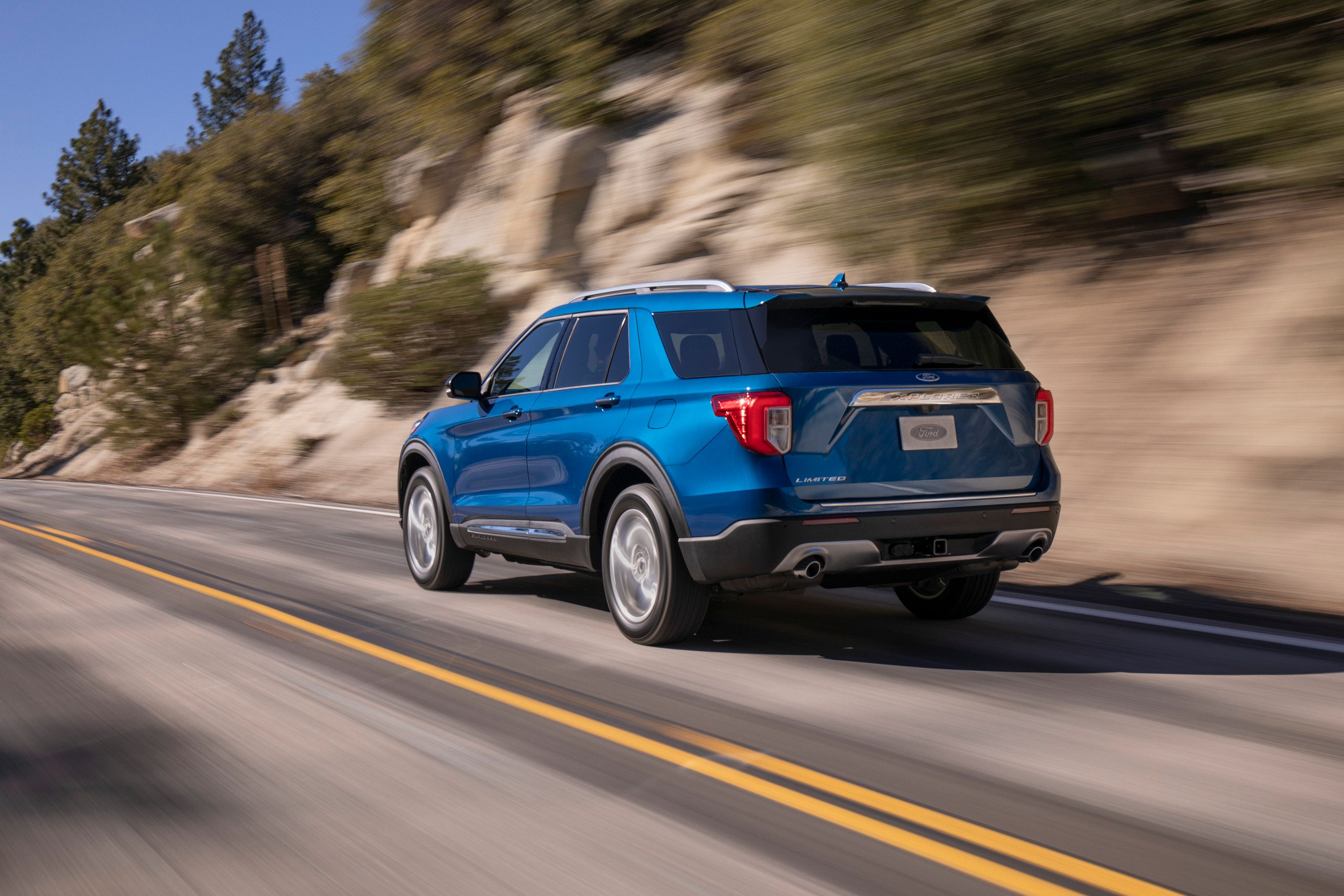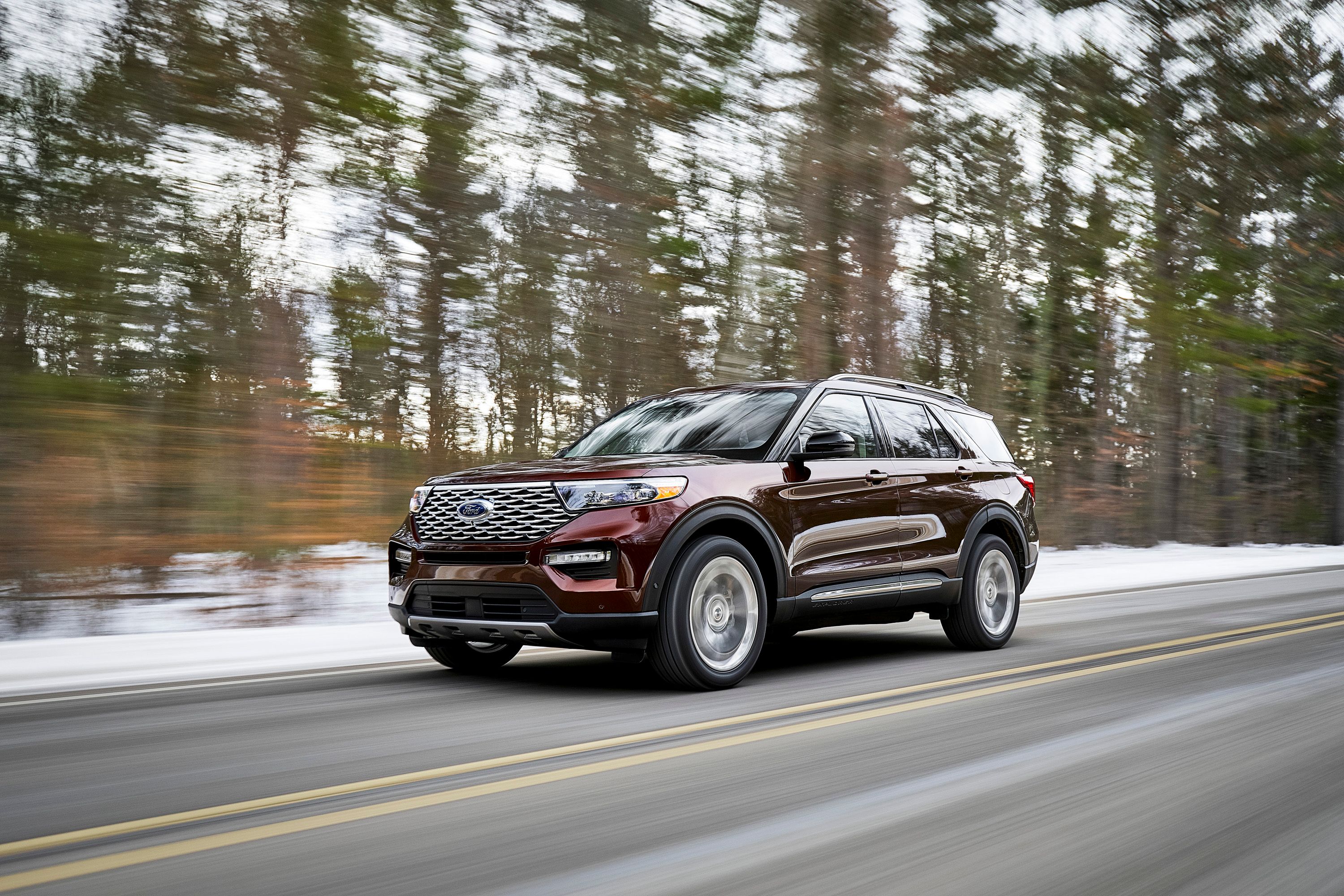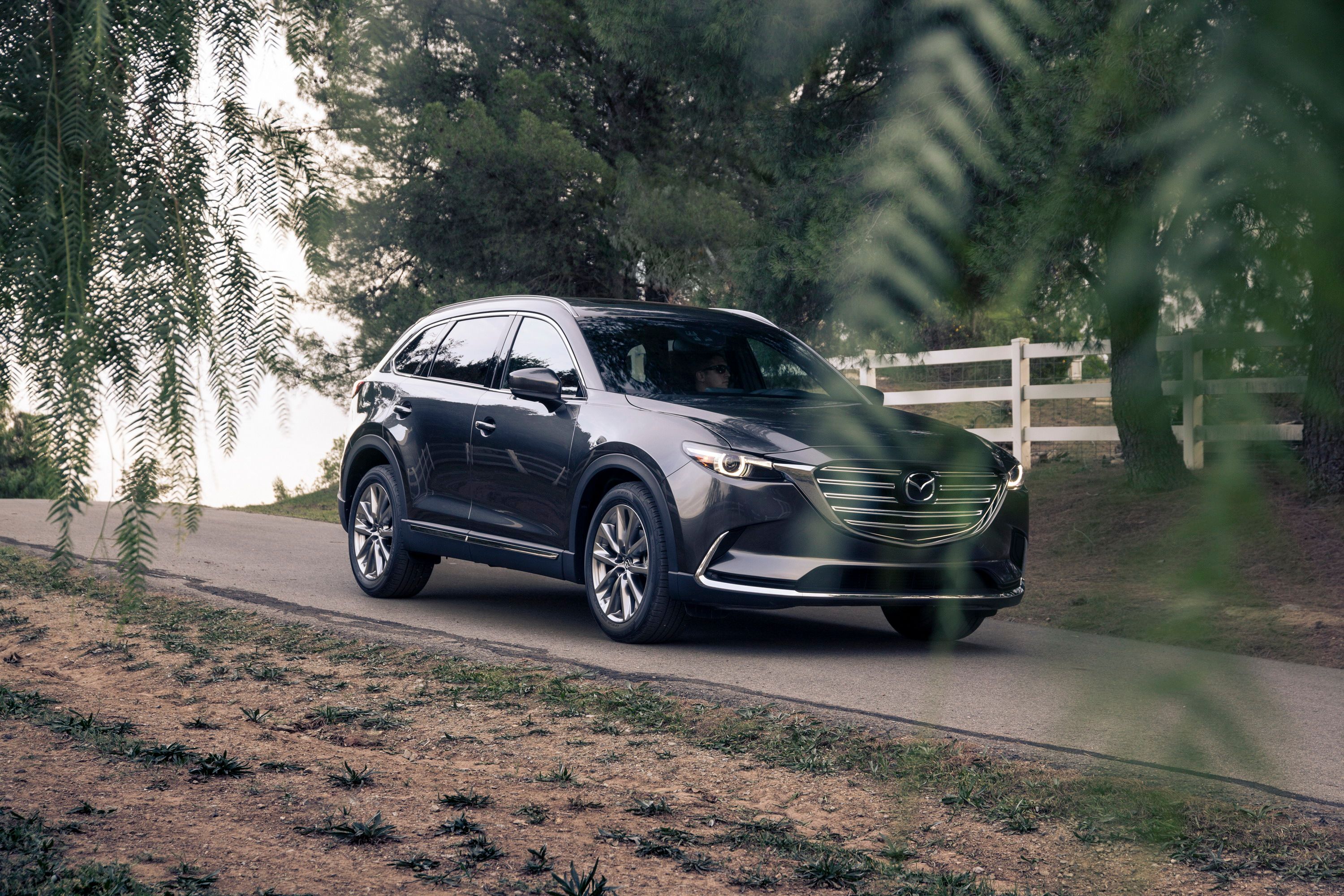The sleek 2019 Mazda CX-9 SUV is one of the least-obvious rivals of the 2020 sixth-generation Explorer. The two models share nothing in terms of exterior design, and this affects the cabin as well. The Mazda is also only available with only one engine and one transmission, and you can only get it with either FWD or AWD. There're a lot of options if you're in the market for a three-row SUV and Ford should take into consideration all of its rivals if it wants to keep topping the sales charts with the latest Explorer. Sure, the Mazda CX-9 isn't for the same kind of person as the Ford but, size wise, they play ball in the same league so here's how the two stack up against one another.
Exterior
|
|
ids=813506,819402 |
no_overlay=true> |
Mazda has a tendency of building some of the prettiest cars on the market thanks to their KODO design language epitomized by the catch-phrase 'soul of motion'. Indeed, the CX-9 is probably the best-looking mid-size SUV money can buy today and that's because it looks sporty and coupe-esque without having you think that the designers started off with something else and turned it into what we see today. My point is, with other coupe-bodied SUVs, like BMW's X6, you realize that the manufacturer basically took their X5 model and altered the roofline to give it a more supple appearance.
With the Mazda, though, no line seems botched, nothing looks crude, all the lines and curves meet just at the right moment, and it all just works, even though your brain is telling you that an SUV that big should, in theory, be chunky and have a wide array of ugly angles. The CX-9 doesn't and, while vastly different in comparison to the Explorer, it looks better.
The profile is equally elegant although the sloping roofline tells the story of a cramped third row of seats, but we'll get to that in a bit. The wheel arches are round and host 18 to 20-inch wheels, depending on trim level. Immediately, this tells you that the CX-9 is a less rugged SUV compared to the Explorer that is happier to be taken off-road which, frankly, should be the case if Ford wants to keep calling their mid-size SUV 'Explorer' in the first place.
In the back, the CX-9 sports equally narrow taillights in tune with the rest of Mazda's lineup. A chromed bar acts as the connector between the two rear light units with the Mazda logo placed right underneath. Again, simplicity is the key with not a huge variety of surfaces and dazzling lines distracting you when looking at the back of this SUV. Depending on trim, the lower area of the rear bumper is made out of a darker or slightly lighter plastic and, on higher trim models, you get an extra chrome bar in between the rear fog lights above the twin exhaust tips.
Similar to what Mazda does, you get smaller 18-inch wheels on the base trim level and the XLT while the Limited and Platinum versions get 20-inch rims, the latter also available with 21-inch aluminum ones. Mazda offers the smaller rims with the Sport and Touring trim levels while in Grand Touring and Signature guise, the CX-9 gets the 20-inch 10-spokes. Outside of the U.S., the top trim levels are called 'Azami' and 'Azami LE', the latter of which is only available with AWD - just like Signature in the U.S. - while all others can be had with FWD too.
The rear window, since I already mentioned it, seems a bit narrow to me, but the Mazda doesn't have the biggest windows ever either - be it side windows or the rear window. However, with the Japanese car, you can blame it on its sportier line. The Explorer has somewhat small wraparound taillights that extend onto the sides and quad exhaust tips that come with the bigger engines.
|
|
ids=813507,819408 |
no_overlay=true> |
Now, let's talk dimensions. The Explorer has a 3.8-inch longer wheelbase although the Mazda is 0.6 inches longer overall. Excluding side mirrors, the Ford is also 1.5 inches wider and 0.9 inches taller. However, unladen, the CX-9 has a greater ground clearance - 8.8 inches - compared to just 8.2 inches maximum for the Explorer.
The Mazda meanwhile offers a decidedly smaller 16-degree approach angle coupled with a similarly smaller 21.1-degree departure angle. The Ford's ramp break over angle is between 17.1 and 17.7 degrees depending on trim level.
Ford Explorer vs Mazda CX-9 Dimensions
|
2020 Ford Explorer |
2019 Mazda CX-9 |
|
|
Wheelbase |
119.1 |
115.3 |
|
Length |
198.8 |
199.4 |
|
Width, excluding mirrors |
78.9 |
77.5 |
|
Width, including mirrors |
89.3 |
TBA |
|
Width, mirrors folded |
82.7 |
TBA |
|
Height |
69.9 |
69 |
|
Track, front curb |
66.9 |
65.3 |
|
Track, rear curb |
66.9 |
65.2 |
|
Front overhang |
33.7 |
TBA |
|
Rear overhang |
46 |
TBA |
|
Ground Clearance |
7.9-8.2 |
8.8 |
Interior
The Mazda CX-9 is pleasant on the outside and just as much when you open the door and jump inside. You will find quality stitching, materials that feel good to the touch and, overall, very little in the way of tacky plastics you would expect from a crossover in this segment. However, the CX-9 isn't as roomy as some of its competitors such as the Explorer or the Honda Pilot. It also can't tow as much as the Explorer either.
By comparison, the cheapest Explorers come with an 8-inch infotainment screen but the pricier ones can be optioned with a 10-inch screen as well as a 12.3-inch digital gauge cluster. The CX-9, meanwhile, comes with old-fashioned needles. that show you have fast you're going or what's the speed at which the engine is revving.
Going back to the Ford, all Explorers are fitted with an electrically-operated trunk hatch, a 4G LTE WiFi hot spot that can host up to 10 devices on top of that infotainment system that naturally supports Android Auto and Apple CarPlay. In contrast, the basic CX-9 Sport comes with a rather rudimentary version of Mazda's Connect infotainment system that features both Pandora and Stitcher integrated as well as voice command. Apple CarPlay and Android Auto integration is available in standard starting with the Touring trim level which adds $3,040 on top of the base MSRP of $32,280 (FWD) or $34,080 (AWD).
Inside the CX-9, you're being sheltered from impending doom through Mazda's i-Activesense suite that uses radars and cameras to keep track of what's going on around your vehicle. It comprises radar cruise control, smart brake support with collision warning (at speeds above 10 mph) that can even apply the brakes for you, blind spot monitoring with rear cross traffic alert, lane departure warning and lane keep assist (that operates when you exceed 37 mph). Beyond all that, you get adaptive front lights with high beam control, city brake support which, again, can brake for you (although it's always better if you're attentive and brake yourself), and traffic sign recognition within the so-called active driving display of the CX-9. Thanks to these clever systems, the CX-9 was named a 2017 IIHS Top Safety Pick Plus.
While the CX-9 "delivers an impressive degree of comfort thanks to a smooth ride, quiet cabin, and well-sculpted seats," as per Edmunds, the Japanese SUV has less passenger and cargo space than the Explorer although "thoughtful design makes it easy to live with" according to the same source. More to the point, the Mazda boasts 135.1 cubic-feet of passenger volume distributed as follows: 39.3 inches of headroom for the passengers in the first row, who also get 57.9 inches of shoulder room. 56.7 inches of hip room and 41 inches of legroom. Second-row passengers get less than an inch deducted in headroom, almost two inches less shoulder room, 0.7 inches off hip room and 0.6 inches off leg room. Things really get cramped in the back as third-row passengers have to work with 35.4 inches of headroom, just 53.1 inches of shoulder room, 40.1 inches of hip room and 29.7 inches of legroom. In short, it gets very narrow and tight in the back of a CX-9 and full-grown adults probably won't find it particularly comfortable back there if your aim is to tackle a longer journey with all seats filled.
Let's now take a quick look at what the Explorer's bragging with.
Cargo space is a bit lackluster in Mazda's case although Edmunds argues that the Japanese automaker makes the best of the available space and that "growing families should find adequate space for their stuff." Well, let's take a look at the figures: 71.2 cubic feet with the second and third row folded versus 87.7 cubic feet inside the Ford. It just goes downhill from here because the Mazda can fit just 38.2 cubic feet of cargo with only the third row folded but the Explorer adds 9.7 cubic feet. With all rows up (the second one lacking captain's chairs), the CX-9 can hold 14.4 cubic feet of your personal belongings, 3.8 cubic feet less than what the insides of the Explorer can cope with. Below, you'll find a breakdown of all the numbers.
Ford Explorer vs. Mazda CX-9 Interior Specs
|
2020 Ford Explorer |
2019 Mazda CX-9 |
|
|
Seating capacity |
7 |
7 |
|
First-row headroom |
40.7 |
39.3 |
|
First-row legroom |
43 |
41 |
|
First-row shoulder room |
61.8 |
57.9 |
|
First-row hip room |
59.2 |
56.7 |
|
Second-row headroom |
40.5 |
38.5 |
|
Second-row legroom |
39 |
39.4 |
|
Second-row shoulder room |
61.9 |
58.1 |
|
Second-row hip room |
59.1 |
57.4 |
|
Third-row headroom |
38.9 |
35.4 |
|
Third-row legroom |
32.2 |
39.7 |
|
Third-row shoulder room |
54.6 |
53.1 |
|
Third-row hip room |
40.9 |
40.1 |
|
Total passenger volume (cu-ft) |
152.7 |
135.1 |
|
Cargo volume behind first row (cu-ft) |
87.8 |
71.2 |
|
Cargo volume behind second row (cu-ft) |
47.9 |
38.2 |
|
Cargo volume behind third row (cu-ft) |
18.2 |
14.4 |
Drivetrain and Performance
There's not much to talk about regarding the drive train of the second-generation CX-9 known internally as the TC. It's underpinned by the familiar Skyactiv platform and was introduced at the 2015 L.A. Auto Show.
The power reaches the wheels through a 6-speed automatic transmission with manual shifting and a Sport mode. Autoweek called Mazda's engine "an absolute gem," adding that "with seven passengers aboard the Mazda has no problem blasting up on-ramps and passing slower traffic without straining." Edmunds praises the transmission for its smooth but rapid shifts while Forbes applauds the SUV's nimble suspension. Weighing 4,242 pounds (between 190 and 287 pounds less than its predecessor), the CX-9 gets from 0 to 60 mph in just 7.1 seconds.
Car & Driver is quick to point out that Mazda's claims that the CX-9 feels like a sedan aren't unsubstantiated. It is, the magazine says, "a rare example of a crossover that still blends a great deal of driving fun with all the utility thanks to a well-sorted chassis and communicative steering." In terms of efficiency, the CX-9 isn't a leader in its class but it does 25 mpg combined with FWD and 23 mpg combined with AWD.
Now, let's talk about the Ford a bit. It returns to a rear-wheel-drive configuration for the first time in a decade as it's built atop the CD6 platform shared with the Lincoln Aviator. The standard engine is a 2.3-liter four-cylinder produces over 300 horsepower and 310 pound-feet of torque - identical with the Mazda. There's also a 3.0-liter twin-turbocharged V-6 with 365 horsepower and 380 pound-feet of torque on tap. The power reaches the wheels, two or four, through a 10-speed automatic transmission.
The Explorer comes into its own when it comes to towing with Ford billing the new mid-size crossover SUV as an 'adventure enabler." With the 'Tow Package,' the total towing capacity goes up to 5,300 pounds even with the 2.3-liter engine under the hood. The bigger unit increases towing capacity by some 300 pounds. This is 3,600 pounds more than what the fifth-gen Explorer could do with the small engine and 600 pounds more than it mustered coupled with the big Ecoboost. The CX-9, meanwhile, can tow in excess of 3,500 pounds if you pay $450 for the towing hitch. That's $450 you have to pay over the $32,280 you have to pay for a CX-9 Sport with FWD. Meanwhile, the base price for an Explorer is $33,000. The range-topping SIgnature CX-9 costs $45,365 with AWD less than $3,000 over the Grand Touring version also equipped with AWD.
Ford Explorer vs Mazda CX-9 Performance Specs
|
2020 Ford Explorer Base |
2020 Ford Explore Platinum |
2019 Mazda CX-9 |
|
|
Engine |
2.3 -liter I4 |
3.0-liter V-6 |
2.5-liter Turbochargerd I4 |
|
Horsepower |
300 |
365 |
227-250 |
|
Torque |
310 lb-ft |
380 lb-ft |
310 lb-ft |
|
Transmission |
10-Speed Auto |
10-Speed Auto |
six-speed auto with manual shifting |
|
Drive |
4WD (optional) |
4WD |
FWD/4WD optional (no FWD on SIgnature) |
|
Curb Weight |
4,345 lb |
4,727 |
4,242 lb |
|
Capacity |
TBA |
5,600 ln |
3,500 lb |
Final Thoughts
At the end of the day, regardless of how good the CX-9 looks or how functional its somewhat cramped interior is, the Explorer will always outsell the crossover SUV built in Hiroshima, Japan. After all, last year, Ford sold 227,732 Explorers despite the fact that sales were down by almost 10% halfway through the year. It thus remains the best-selling SUV in the U.S. while Mazda shipped only 28,257 CX-9s throughout 2018.
To put things into perspective, the 2019 GMC Acadia, which a while back is a much bigger money-maker for GMC who sold about three times as many Acadias compared to CX-9s. With that being said, the Mazda does seem to be on an uphill trend regarding sales, so Mazda just needs to focus on doing its thing and not worry too much about the new Explorer massively out-seeling the more stylish Japanese crossover SUV that you can find for about $27,000 (for an almost-new 2018 model year vehicle).
Further reading
Read our full review on the 2020 Ford Explorer
Read our full review on the 2019 Mazda CX-9
Read our full driven review on the 2017 Mazda CX-9.

